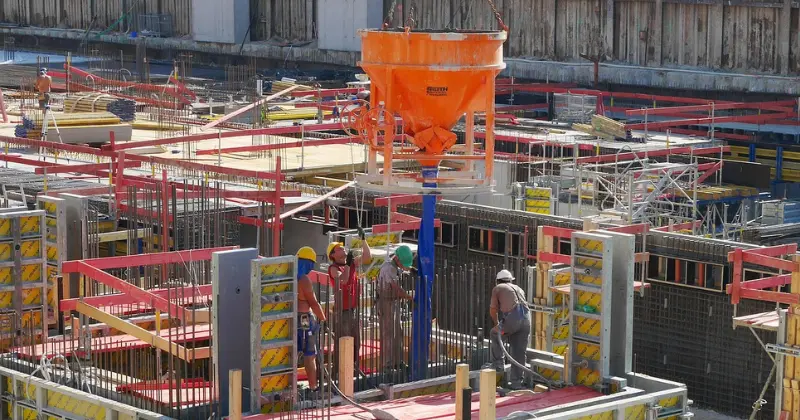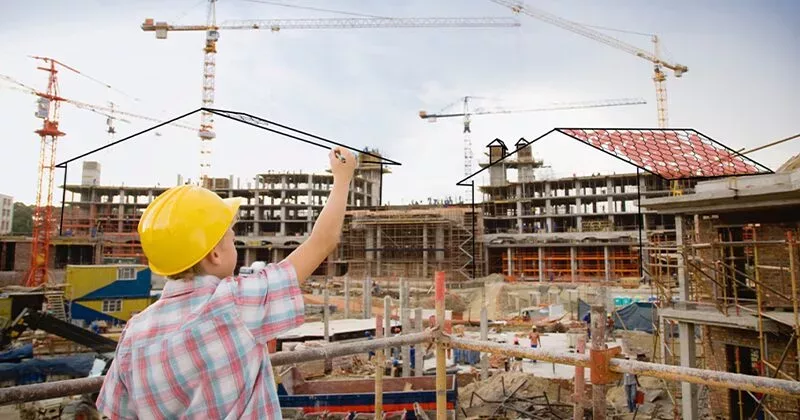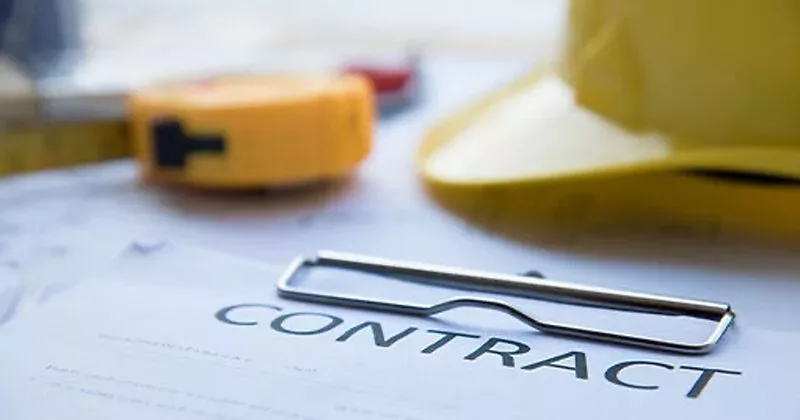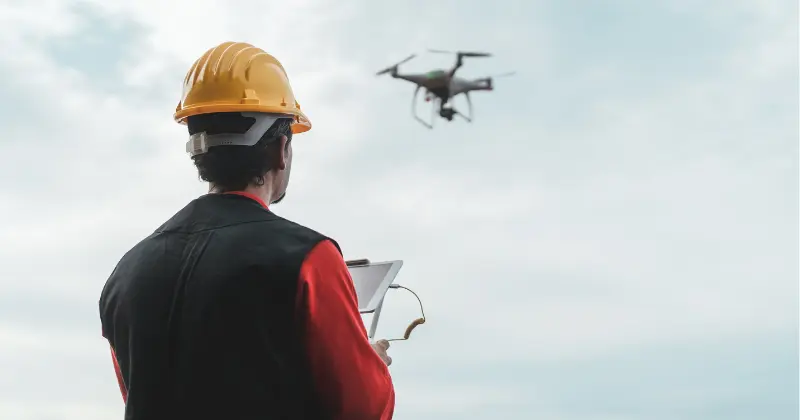11 mins read
What Is Construction Site Management? 10 Tips to Optimize Site Safety and Productivity

Every construction site is different, and each project or location brings new challenges and constraints. That’s what makes construction site management such a critical responsibility. Coordinating the long list of personnel, legal, and environmental considerations while keeping projects on track is a truly remarkable accomplishment.
In this blog post, we discuss the meaning and importance of construction site management, and the written plans and strategies that keep projects flowing smoothly. We also provide a useful list of site management tips and explore the benefits of software and technology.
What Is Site Management in Construction?
Construction site management is the process of overseeing and coordinating the resources, equipment, and activities associated with an active job site from planning through completion. Project budget and schedule adherence are also driven by effective site management.
Overall responsibility for the site is sometimes split between multiple parties, but the construction manager typically oversees all issues and decisions related to the location and physical constraints. Performing this role effectively requires a combination of project management skills, technical knowledge, and collaboration to ensure all stakeholders fully understand the relevant goals and objectives.
Construction site analysis to review the physical limitations, risk factors, legal considerations, and potential of a chosen location is the first important site management task, since this evaluation brings to light environmental, zoning, and access issues that may impact project feasibility and scheduling. Once this activity is completed, the construction site planning process brings together all facets of site preparation, transportation, amenities, and safety.
What is included in a construction site management plan?
Detailed and accurate documentation improves communication, understanding, and accountability on the job site. A construction site management plan is a comprehensive document that describes how the project will be organized and controlled in a way that complements the physical site. The plan will typically include information on:
- Safety procedures, emergency response plans, and training requirements
- Environmental considerations, including waste management and pollution control
- Meeting and information-sharing guidelines for contractors, clients, and other stakeholders
- Quality control guidelines to ensure the project meets specified standards
A good site management plan also includes information on the layout of surrounding buildings, roads, and utilities, and how they align with the temporary rest, shelter, and dining areas that keep workers comfortable during business hours. The goal of the plan is to provide a common information source to minimize risks and keep everyone on the same page.
What Is the Importance of Effective Construction Site Management?
Effective construction site management allows projects to be completed on time and within the established budget, with labor, equipment, materials, and the physical site itself carefully coordinated to minimize delays and improve productivity. Site management practices also play a key role in maintaining a safe work environment where accidents and injuries are avoided, and regulatory compliance is maintained.
Responsible practices also improve sustainability and reduce environmental impact by ensuring waste and pollution are minimized and natural habitats and boundaries are respected. Well-organized workflows, attention to worker needs and amenities, and forward-thinking construction risk management practices improve morale on the job site, leading to higher quality and productivity levels throughout the project.
How to Manage a Construction Site: Top 10 Tips & Best Practices

Leaders might spend their entire careers learning how to manage a construction site yet still have more lessons to learn and share with their teams. Basic tips and best practices form a foundation to build upon this wealth of knowledge and experience.
1. Create a detailed construction site management plan
The value of a written site management plan is worth emphasizing. It provides the first and best opportunity to establish rules and guidelines for both the project and the site, and it compiles information that will prevent mistakes, safety issues, and confusion during construction. It is also important to treat the site management plan as a living document, adjusting and adding to it as needed when project or site conditions change.
2. Establish clear communication channels
With so much activity and commotion on the job site throughout the project lifecycle, effective communication skills are essential to keep contractors, workers, and other construction roles on the same page. Clear and consistent communication channels keep everyone aware of project priorities and safety concerns while providing a platform for collaborative problem-solving. Up-to-date documentation, regular onsite meetings, and digital construction collaboration software have proven to be effective communication channels.
3. Assess potential risks
The wide range of activities within the scope of construction site management are accomplished more effectively when risk management practices are used to identify and eliminate problems before they can lead to construction site accidents, delays, or financial losses. Each site has unique risk factors outside of the project itself, including surrounding structures, weather conditions, traffic, and regulatory concerns. Evaluating risks and implementing corrective actions helps to ensure all activities stay on track with minimal surprises or unplanned changes.
4. Prioritize safety above anything
Quality, sustainability, and productivity are important goals, but site management practices should always emphasize safety above all else. Training, safety inspections, and personal protective equipment (PPE) are important considerations that require careful monitoring and tracking. Written safety plans can become part of the site management plan or be released as standalone documents. These plans should describe the safety hazards associated with the project and the steps each stakeholder must take to protect themselves and others. If you want to learn more about the topic, check out our blog about construction safety management.
5. Track progress against goals
Ensuring projects progress as planned is an important aspect of construction site management. Construction managers should continually find new ways to optimize labor, material, and equipment resource utilization as they minimize waste and stay in sync with high-level project schedules and budgets. Early identification of potential obstacles, along with effective collaboration and problem-solving, also builds trust among clients, contractors, and other stakeholders.
6. Ensure regulatory compliance
Staying on top of regulatory issues is one of the most important and demanding site management responsibilities since the combination of regular inspections, thorough documentation, training programs, and permit acquisitions must be continually balanced with many other priorities. Each region has its own combination of regulatory bodies and requirements to safeguard building code compliance and worker well-being. These regulations originate from agencies that include:
- Australia – Safe Work Australia (SWA)
- South Africa – South African Bureau of Standards (SABS)
- US – Occupational Safety and Health Administration (OSHA)
- UK – Health and Safety Executive (HSE)
7. Conduct regular quality checks
Site quality checks complement safety, compliance, and risk management activities since they help to identify previously unknown issues that can impact a project in many different ways. Construction quality inspections at regular intervals help to ensure all work complies with the project contract, drawings, and specifications. These regular quality checks also provide an opportunity to review environmental, safety, and regulatory issues over the entire site.
8. Understand site constraints
Unlike industries such as manufacturing or software development where each new project or task is simply an extension of previous activities, the variety of construction site types, locations, and conditions creates a unique set of constraints that must be fully understood and managed. For example, some sites are located near residential areas that limit equipment noise and working hours, while others might have weather or environmental constraints that limit vehicle and worker mobility.
9. Integrate technology
No construction site is too small to utilize modern technology to help monitor ongoing activities, safety issues, and environmental conditions. Innovative digital construction technology, like digital twins and building information modeling (BIM), allows designers and project managers to visualize structures and surrounding areas remotely, and then safely test design concepts and changes in the digital realm. At the same time, advanced construction drones and robots improve site visibility and efficiency by providing enhanced mapping and monitoring capabilities.
10. Use construction software
State-of-the-art construction software solutions are among the best applications of technology for site management, with mobile-friendly solutions empowering teams to track and manage resource utilization, safety, compliance, and documentation issues in real-time from a single, unified platform. These tools are also the key to improved jobsite collaboration, with all stakeholders working from a common set of information and communicating digitally when site constraints make in-person conversations challenging.
Conclusion
Construction site management requires a delicate balance between safety, compliance, and environmental concerns and aggressive project budgets and timelines. With so many variables to monitor and analyze, construction software has become an indispensable key to success.
At RIB Software, we have developed a robust toolkit of solutions that encompass everything from planning and design to operations and maintenance to help lessen the heavy burden of site management, all with collaboration at the forefront.
Our solutions are trusted by over 23,000 companies in 100+ countries to improve their site management and project execution. If you want to benefit from state-of-the-art digital construction technology, get a demo today and discover how RIB can transform your organization!
Most Recent
11 mins read
10 mins read
10 mins read
29 mins read
Blog Categories

Ebook











